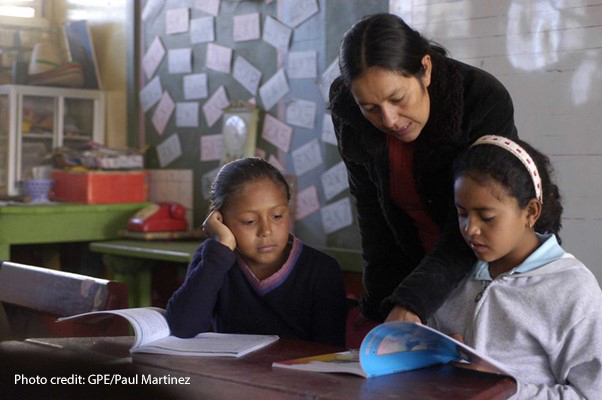This article, based on a recent conference presentation, is contributed by Mike Douse, who explores how education’s forthcoming fundamental transformation will result in far fewer teachers worldwide, with each of them facilitating learning much more effectively, and all deserving and hopefully receiving substantially greater remuneration and intangible rewards than in the current outdated situation.
A ‘typical’ middle-income country of, say, 10 million people, with a ‘normal’ age distribution, might have something of the order of:
- Around two million children and young adolescents (under 15 years old)
- Five to six million working-age adults (15-64 years); and
- Two to three million elderly (65 years and older).
Suppose then that there are 3 million learners (here again, I am using data from those three example countries) from pre-school through to university postgraduate and including TVET. Depending upon teacher:student ratios and other arrangements, then this requires 120,000 to 140,000 full-time equivalent teachers (ignoring for the present school leaders and supply teachers and suchlike). Suppose that the typical country in question spends 6% of its GDP on education (the range is vast) and a total of 5% on teacher’s salaries. This (nor am I pretending to be an economist) ends up with the median teacher salary somewhere around the 50th to 55th percentile, significantly lower than the typical remuneration of those with similar educational qualifications (lawyers, accountants, engineers…) and, many would say, in a much more stressful occupation, albeit a vocation.
And this applies to middle-income countries. Those in the lower categories (the majority) tend to pay their teachers even less, actually and relatively: the expression ‘poor as a teacher’ is current across much of Sub-Saharan Africa. In many countries, teachers resort to extra after-hours tuition (now banned in some Asian nations) with all of its potential for irregularities. Teachers’ families can often survive only through their partner (or their school age children) being in better-remunerated work. While no teacher can ever be paid what she or he is worth, the requirement for so many, especially in societies with high birth rates and even higher academic aspirations, means that teaching, worldwide, as presently structured, can never be a financially attractive occupation for most of its practitioners.
This need not always be so. Indeed, social, cultural and workforce requirements are already making redundant the prevailing situation of aggregating learners in schools as physical places (rather than as geographically unconfined processes) and teaching at them. Professor Philip Uys and I have presented and published extensively on ‘education’s forthcoming and fundamental transformation’ reflecting the evolving tangible/virtual consciousness, necessitated and made possible by contemporary technology. Essentially, from lower secondary onwards, the learner shall lead even on curriculum. Teachers will then, we contend, come into their own in providing expert support, facilitation of learning and personalised encouragement – but no longer be involved in controlling, accrediting, punishing or being the sole founts of knowledge.
And with the learner leading (in the manner entirely appropriate to 21st century information and ideas exchange) there need not be nearly so many of them. Currently, it is as if a navigator cum motor mechanic cum traffic police officer needs to travel always with every vehicle. When the secondary (or lifelong) learner takes over responsibility (prepared for through primary) for their own exploration of knowledge and life, there will need to be just enough teachers to respond to enquiries and calls for help: much as a well-equipped garage and a road emergency service suffice.
And those consultants on call will need to be both competent and inspirational. Going back to that earlier country of 10 million good souls: now there might be 5 rather than just 3 million learners, served, supported and stimulated by just, let us say, 60,000 as opposed to 130,000 high-quality teachers: responding expertly and sensitively to learners’ needs; running classes (and choirs, and debating societies, and science clubs, and cricket coaching) as requested; improving their own knowledge and teaching skills; being truly respected and being paid a decent salary… ‘As prosperous as a teacher.’





